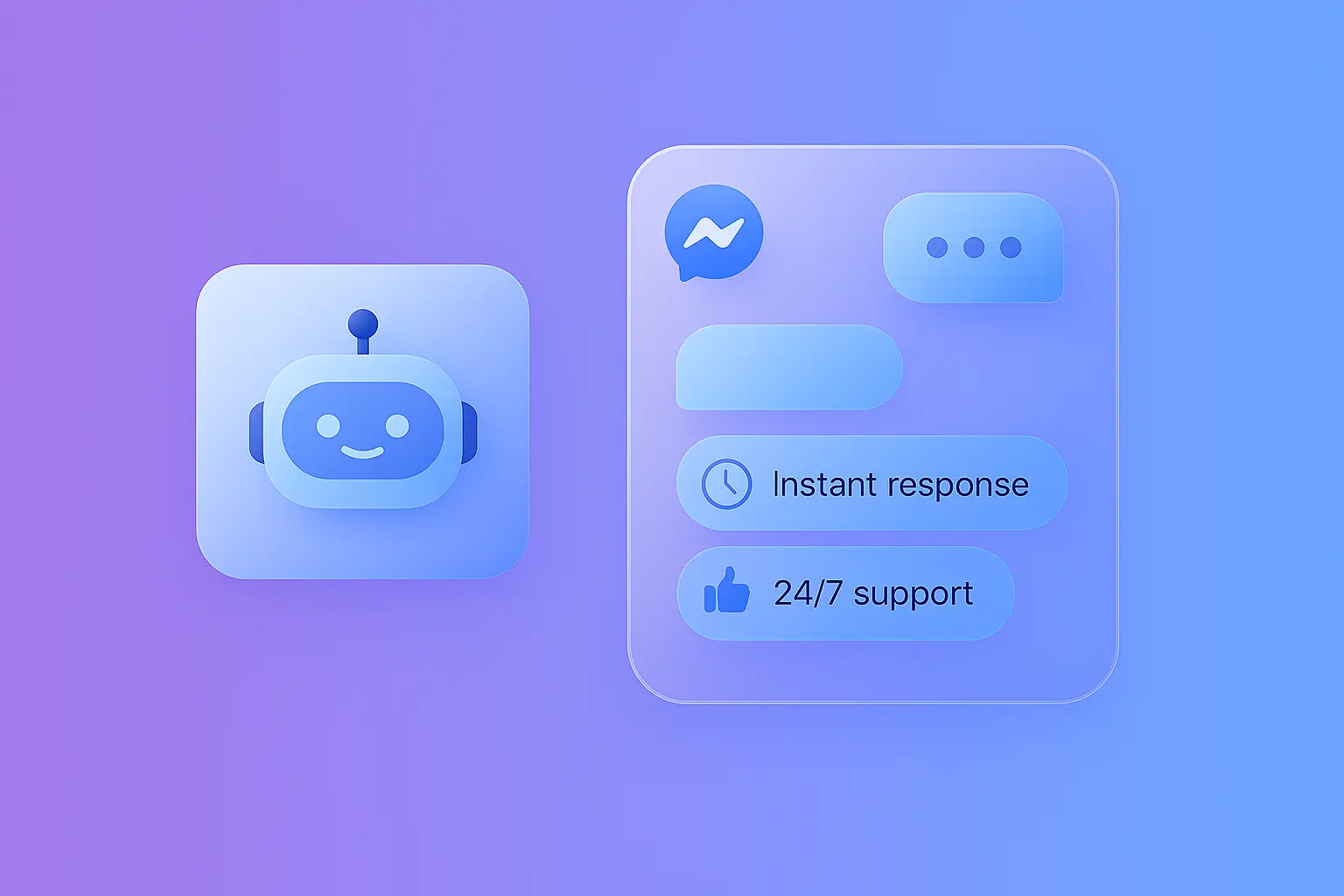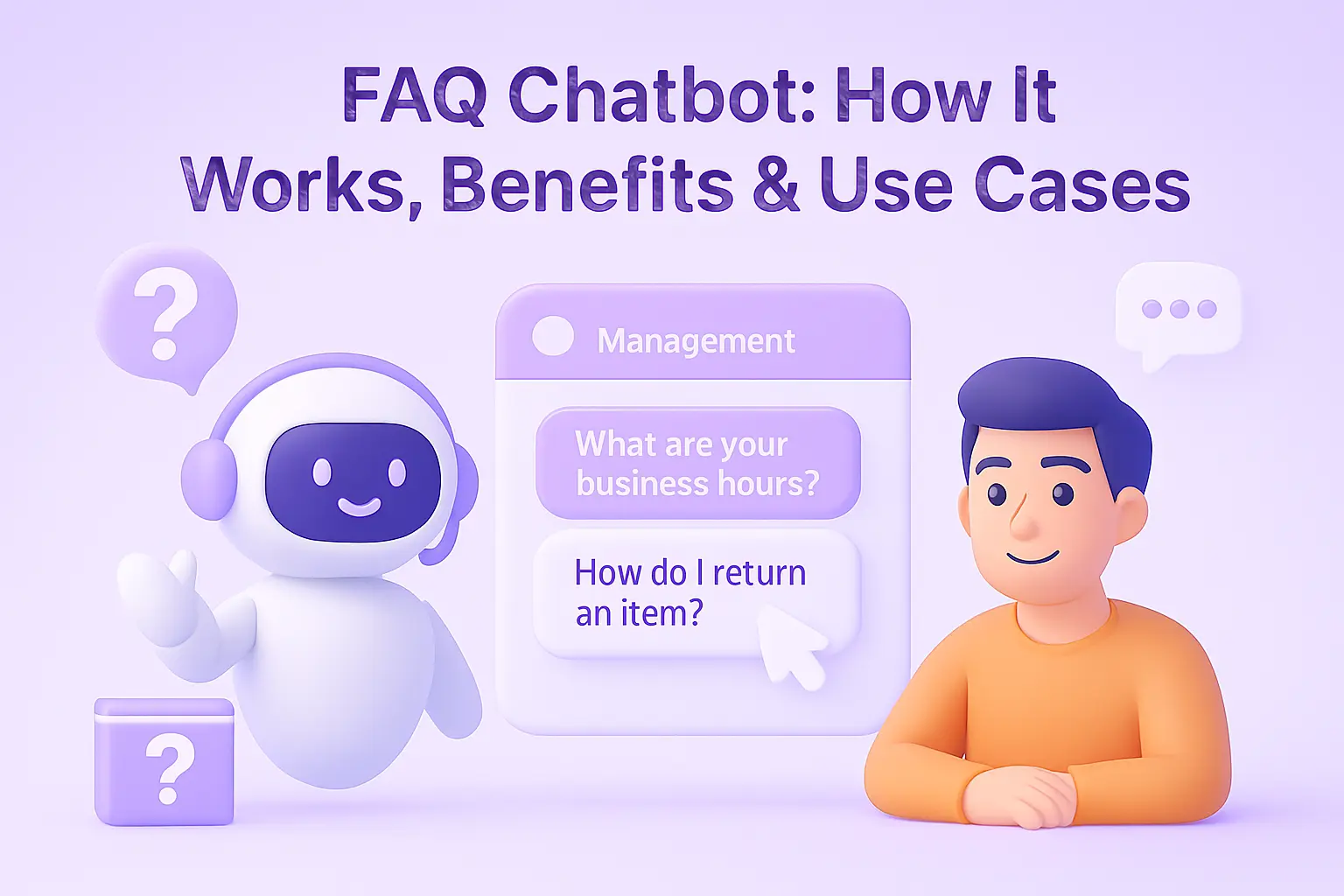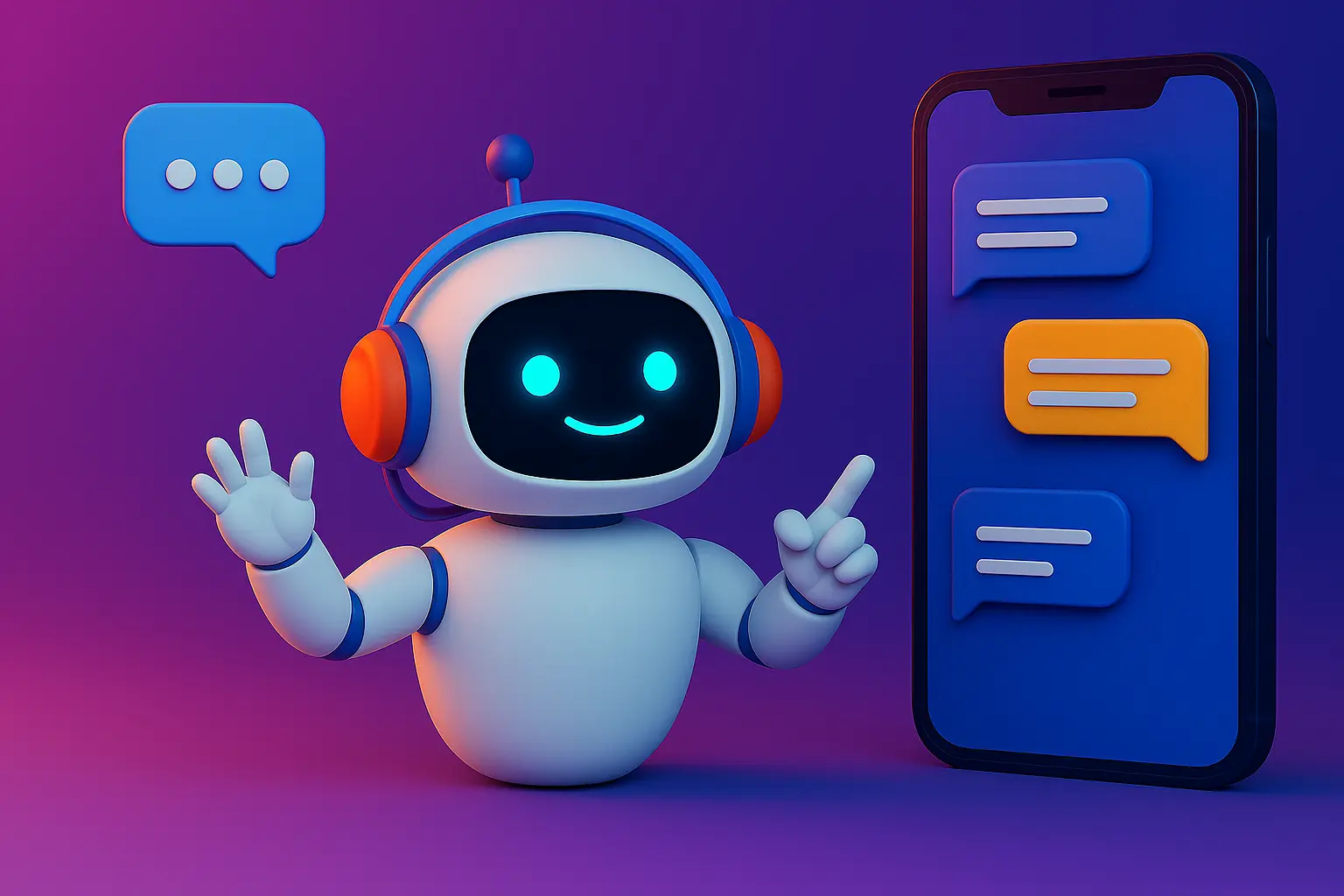Chatbots Explained: What is AI Chatbot & How does it work?
- June 23, 2025
- 14 mins read
- Listen

If you are wondering what a chatbot is and why it is vital, let me put you in a situation. You’re booking a flight online, but the website is confusing. You’re stuck, ready to give up. Suddenly, a chat window pops up. A friendly chatbot guides you through the process, suggests the best deals, and even confirms your booking in minutes.
That’s a chatbot at work! These clever tools are like digital helpers, making life easier for you and businesses alike. In this blog, we’ll uncover what chatbots are, why they’re a big deal, and how tools like REVE Chat can transform customer experiences.
What is a Chatbot?
A chatbot is a conversational AI tool designed to interact with people through text or voice, mimicking human-like conversations.
Powered by artificial intelligence (AI), chatbots understand questions, provide answers, and perform tasks like booking appointments or recommending products. They’re like a super-smart friend who’s always ready to help, available 24/7 on websites, apps, or messaging platforms.
Different Types of Chatbots
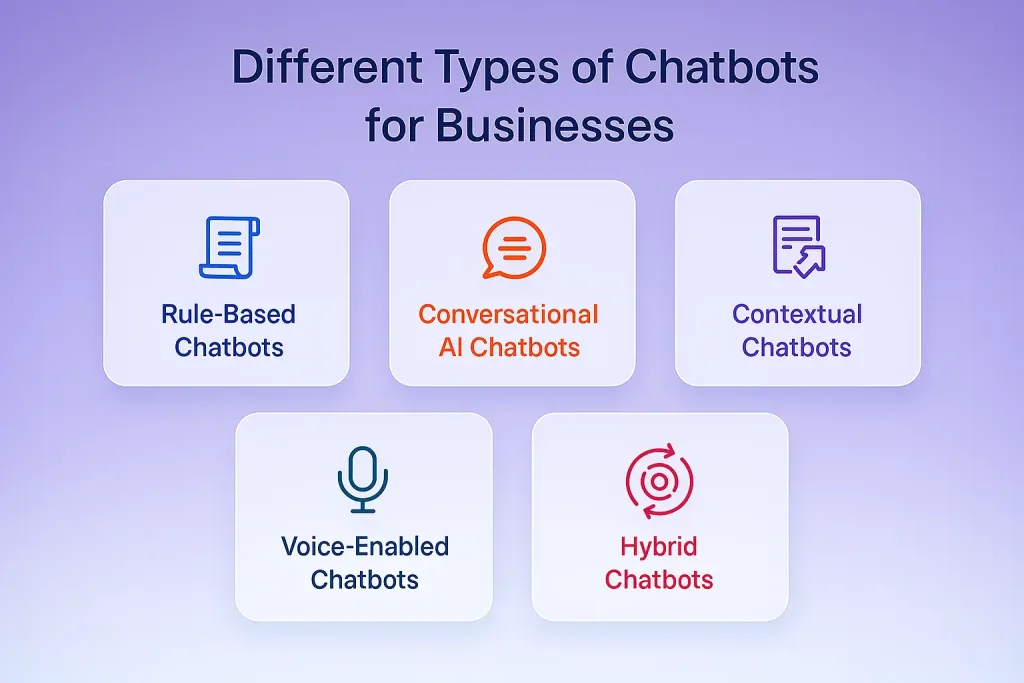
Chatbots come in a variety of flavors, each designed to tackle specific tasks and make your life easier. From simple scripted helpers to brainy AI wizards, here’s a rundown of the most common types of chatbots and what they bring to the table:
- Rule-Based Chatbots: These follow pre-set scripts or decision trees. They’re simple, like a choose-your-own-adventure book, but can’t handle complex questions. For example, a restaurant chatbot might ask, “Do you want pizza or pasta?” and guide you through a menu.
- AI-Powered Chatbots: These use natural language processing (NLP) and machine learning (ML) to understand and respond to open-ended questions. They learn from user interactions, getting smarter over time. For instance, an AI chatbot can answer, “What’s the best laptop for gaming?” with tailored suggestions.
- Hybrid Chatbots: These combine rule-based and AI-powered approaches for a balanced solution. They rely on structured scripts for routine tasks to ensure consistency, while leveraging AI to handle more complex, open-ended queries with natural language understanding. This makes them versatile for businesses needing both efficiency and adaptability in customer interactions.
- Voice-Activated Chatbots: These chatty assistants respond to voice commands, bringing a hands-free vibe. Found in devices like smart speakers, they’re great for tasks like setting reminders or playing music. Imagine saying, “Hey, play my workout playlist,” and your chatbot queues it up instantly.
- Generative AI Chatbots: These next-level bots, powered by large language models (LLMs), generate human-like responses from scratch, handling complex and creative queries with flair. For example, a generative AI chatbot could whip up a personalized travel itinerary when you say, “Plan a weekend getaway in Paris,” complete with unique dining and sightseeing tips.
Know more types of chatbots to get a complete idea.
How Do Chatbots Work?
Each chatbot type has its unique way of bringing the magic. Using different tech and tricks to help users and businesses. Here’s how the most common chatbot types get the job done:
How does a Rule-Based Chatbot work?
These bots operate on pre-programmed scripts and decision trees, guiding users through fixed paths like a digital flowchart. Rule-based chatbots work in these ways:
- Have a list of predefined rules
- Take user input and match it with keywords
- Give users responses based on pre-written ones
- Continue the conversation flow based on predefined rules set before.
For example, a rule-based pizza shop chatbot might prompt, “Choose crust: thin or thick?” and follow a set menu, but it can’t handle off-script questions like “What’s the spiciest topping?”
How does an AI-powered chatbot work?
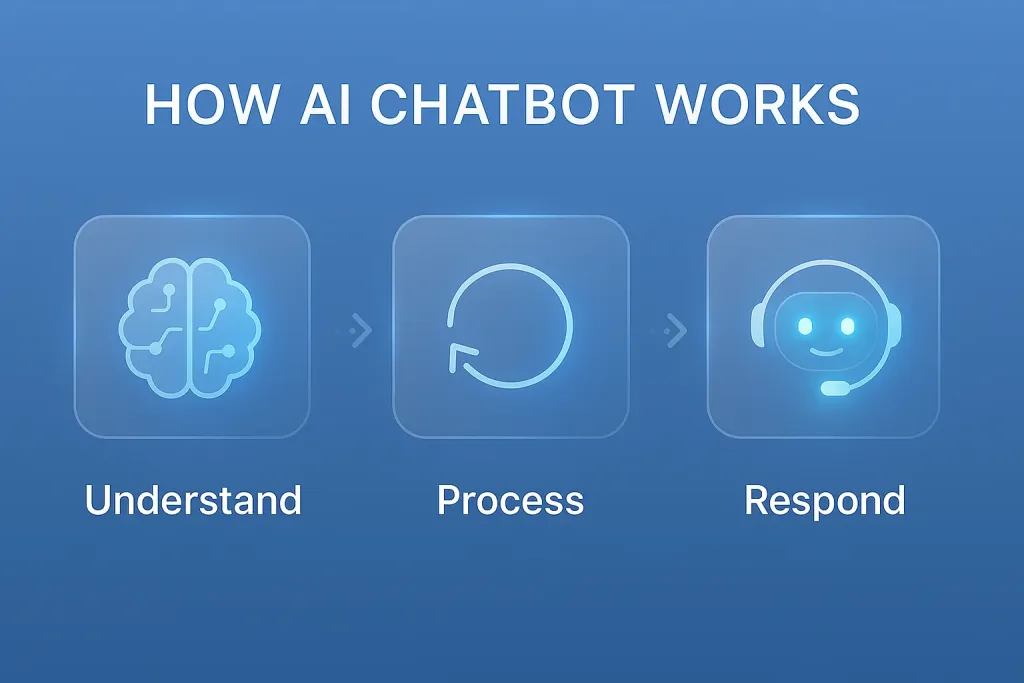
Using natural language processing (NLP) and machine learning (ML), these bots understand and respond to open-ended queries, improving with each interaction. Hence, this is how a general AI-driven chatbot can work:
- Chatbot is configured with ML, NLP, and other conversational technologies.
- Take user input
- Analyze the input to understand customer intent
- Create a list of entities to fulfill customer intent
- Respond according to what the customer wants to know
- Store conversations as AI Chatbots adapt and learn from past communications.
Thus, you can ask an AI-powered chatbot, “What’s a good budget laptop?” It will analyze data to suggest options, learning from past chats to refine its answers.
How does a Hybrid Chatbot work?
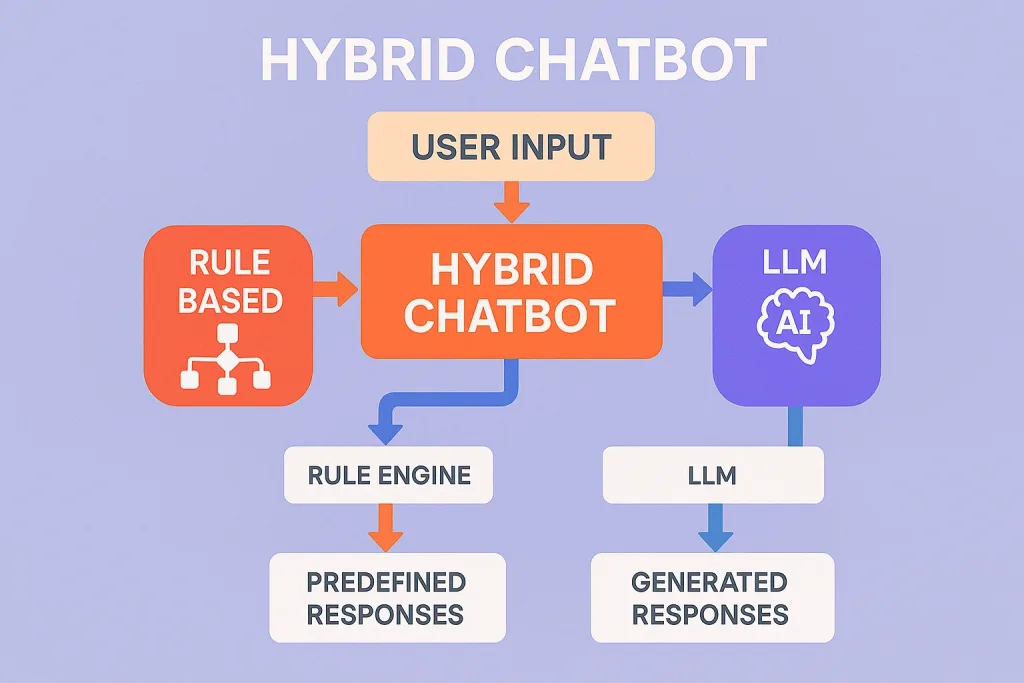
Blending rule-based scripts with AI smarts, hybrid chatbots tackle simple tasks with pre-set flows and switch to NLP for complex queries. Thus, here is how hybrid chatbots work:
- Have a list of predefined rules
- Take user input and analyze it for user intent
- Use predefined responses if input matches configured rules, or use AI and NLP capabilities for contextual responses.
For instance, they might use a script to book a hotel room but tap AI to answer, “What’s the best nearby restaurant for families?”
How does a Voice-Activated Chatbot work?
These bots process spoken commands through speech recognition and NLP, delivering hands-free convenience. These work similarly to the previous types as they just take input via voice rather than text.
Say, “Set a timer for 10 minutes” to your smart speaker, and the chatbot converts your voice to text, processes it, and sets the timer instantly.
How does a Generative AI Chatbot work?
Powered by advanced large language models (LLMs), these bots generate creative, human-like responses by drawing on vast training data. Here is how generative AI chatbots can work.
- Train a chatbot with a knowledge base full of vital information.
- Take user input and break it down into tokens.
- LLM takes the tokens and analyzes them for understanding customer intent and need.
- Use information from the knowledge base and generate contextual responses.
- Learn from conversations and improve the information in the knowledge base accordingly.
Tell one, “Write a catchy slogan for my coffee shop,” and it’ll craft something like, “Brewed with love, served with a smile!” tailored to your needs.
Why Are Chatbots Important?
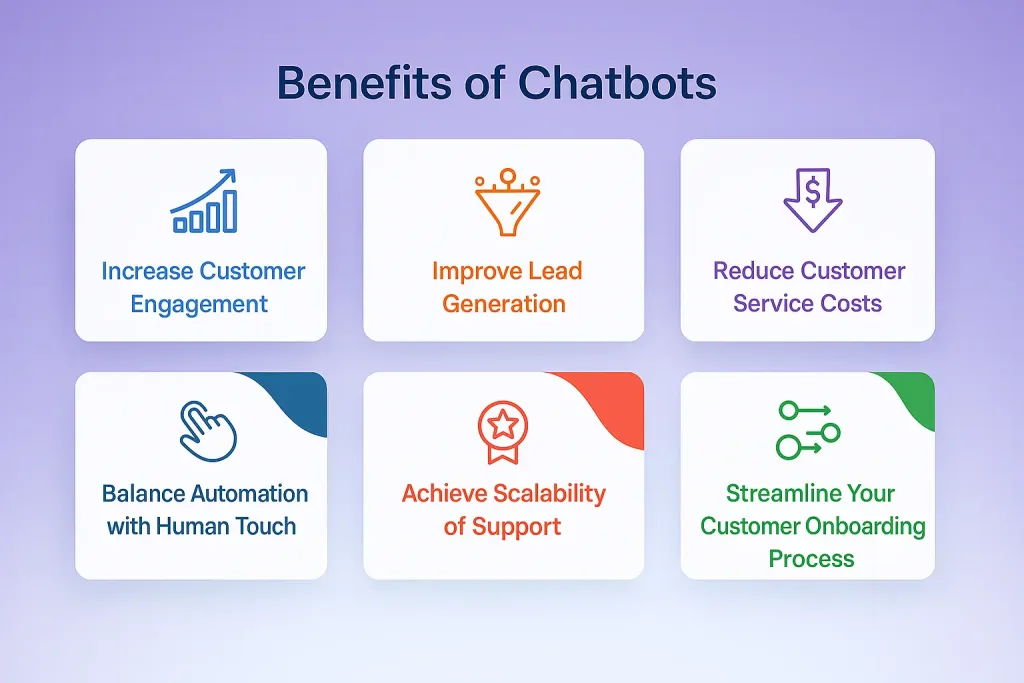
Chatbots are transforming how businesses and customers connect, making life easier for both. There are tons of benefits of chatbots for businesses and customers. Let’s find the key takeaways.
For Businesses
Chatbots are your ultimate customer support tool. It crushes repetitive tasks and charms visitors into loyal buyers with slick, sales-boosting conversations that skyrocket your success!
Slash Costs, Boost Savings
Chatbots handle thousands of customer queries at once, reducing the need for large support teams. For example, a retail store using a chatbot to answer FAQs can cut support costs, freeing up funds for growth. A U.S.-based study estimates chatbots can save businesses up to $23 billion annually by automating 30% of contact center tasks.
Work Smarter, Not Harder
By automating repetitive tasks like order tracking or password resets, chatbots streamline operations. A hotel chatbot, for instance, can confirm bookings in seconds, letting staff focus on guest experiences.
Turn Visitors into Buyers
Chatbots engage website visitors, qualify leads, and guide them to sales. Picture a chatbot on a tech site asking, “Looking for a laptop?” and recommending options, boosting conversions.
Unlock Valuable Insights
Chatbots collect data on what customers ask and want. This helps businesses improve products or tailor marketing. For example, a chatbot might notice users often ask about eco-friendly products, prompting a new green campaign.
Stay Consistent, Build Trust
Chatbots deliver the same friendly, on-brand message every time. Whether on your website or WhatsApp, they strengthen your brand’s identity, making it instantly recognizable.
Grow Without Limits
Chatbots scale effortlessly, handling one or a million chats with ease. They integrate with platforms like Shopify or Facebook, giving businesses flexibility to expand.
For Customers
Chatbots are your non-stop, genius bestie, zapping instant solutions and spot-on recommendations like snagging the coolest gear or checking your order in a flash. Let’s have a look at more prominent reasons.
Instant Response
Chatbots provide instant help, from checking delivery status to troubleshooting a gadget. No more waiting on hold! For example, a banking chatbot can explain fees in seconds. 68% of users appreciate the quickness of chatbot responses.
Personalized Support
Using data like browsing history, chatbots offer personalized recommendations. Shopping online? A chatbot might suggest sneakers that match your style, making the experience delightful.
Help Anytime, Anywhere
Chatbots are available 24/7 on your phone, laptop, or favorite app. Need help at midnight? They’re there, making support super convenient.
No More Long Waits
Chatbots handle tons of queries at once, so you get answers fast. A busy e-commerce site can resolve hundreds of “Where’s my order?” questions in minutes, keeping customers happy.
Fix Issues Like a Pro
Chatbots guide you through solutions, such as resetting a router or selecting a subscription plan. They break down complex steps into simple instructions, saving you time and stress.
Prominent Use Cases of Chatbots
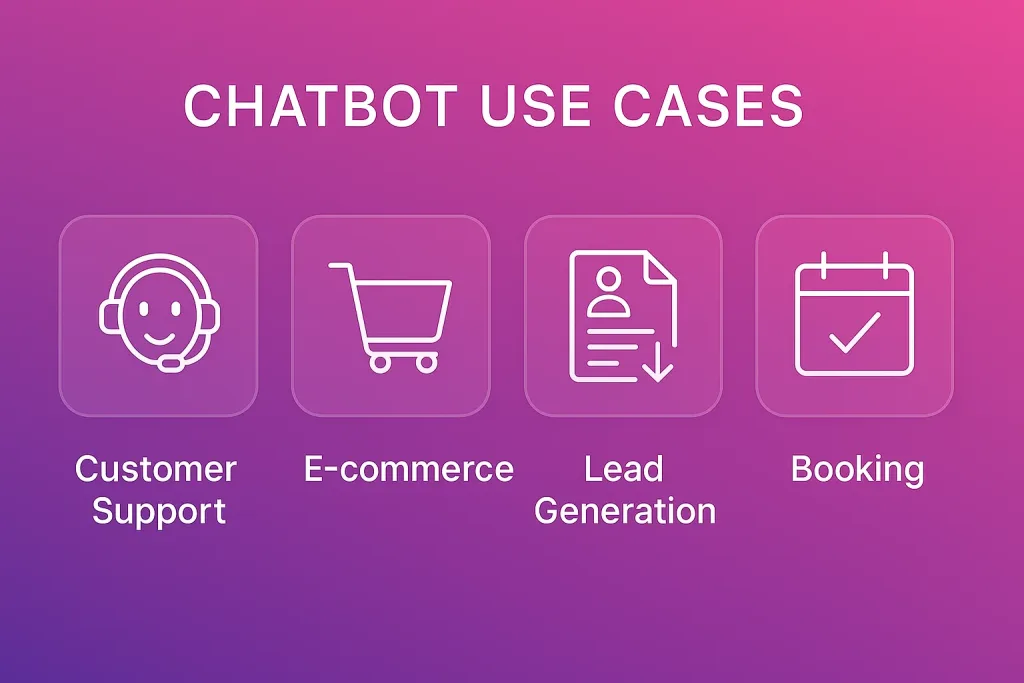
Knowing the proper chatbot use cases can take your business growth to the next level. Let’s find the major use cases of chatbots from various industries.
Handling Routine Queries
Businesses have to deal with very simple and common questions that they have to answer repeatedly. To answer these questions, chatbots are extremely useful as they can either be trained with the important information or have predefined responses ready for such situations.
Customers can always ask, “Where are your outlets?” and a chatbot can easily pull up the locations of your stores and give the customers a full list without delay.
Lead Generation
Using a chatbot, a company can easily generate leads by either reaching out to customers proactively while they are visiting your website or through other types of communication.
A customer can always have a conversation, such as “Do you have any templates for forms?”. A chatbot can respond with a list of form templates, but first ask for customer information before giving away the downloadable. That way, you have gained details of a potential customer for your business.
Troubleshooting Technical Issues
In the telecom world, chatbots act as 24/7 tech wizards, guiding customers through fixes for common issues like slow internet or dropped calls.
For example, a customer types, “Why’s my Wi-Fi spotty?” and the chatbot walks them through resetting their router step-by-step, saving a call to the support center.
Plan Selection and Upgrades
Chatbots help telecom customers pick the perfect plan by asking about their needs and suggesting options.
Imagine a user saying, “I need a plan for heavy streaming,” and the chatbot instantly recommends a high-data plan with Netflix perks, even handling the upgrade process seamlessly.
Instant Account Support
Chatbots are like personal bankers, available round-the-clock to answer queries about account balances or transaction history.
For instance, a customer asks, “What’s my credit card balance?” and the chatbot securely pulls the info in seconds, no hold music required.
Fraud Detection and Alerts
Finance chatbots keep an eye out for suspicious activity, notifying users instantly.
Picture a chatbot messaging, “Did you just make a $500 purchase in Paris?” and guiding the user to freeze their account if it’s fraud, all while keeping their data safe.
Personalized Product Recommendations
E-commerce chatbots act as savvy shopping assistants, suggesting items based on browsing history or preferences.
A customer browsing sneakers might get a chatbot nudge like, “Love those Nikes? Check out these matching socks!” boosting sales with tailored picks.
Order Tracking and Returns
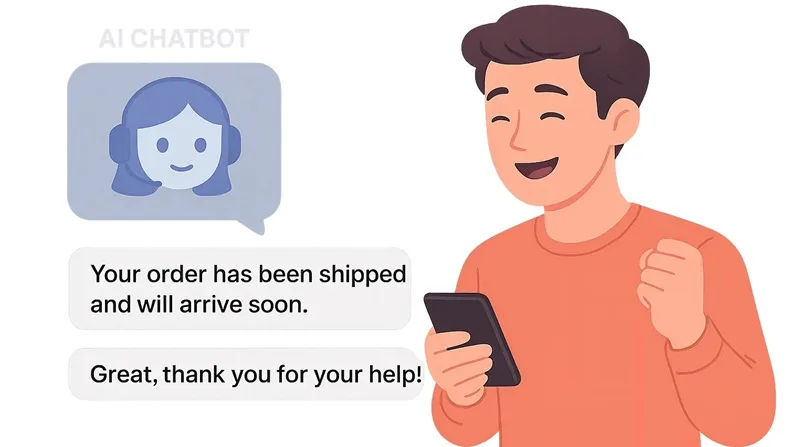
Chatbots in e-commerce make order tracking a breeze, providing real-time updates and handling returns. For example, a shopper asks, “Where’s my package?” and the chatbot shares the delivery status or initiates a return process, keeping the experience smooth and stress-free.
Chatbot Best Practices
Want your chatbot to rock? You must know the chatbot best practices to make it smart, friendly, and a total game-changer! Here are eight simple tips to create a chatbot that customers love and your business thrives on:
Know Your Customers
Understand what your customers want and how they talk. A coffee shop bot might use fun slang for teens, while a bank bot stays sharp for professionals.
Set Clear Goals
Choose what your bot should do, such as answering questions or boosting sales. A store bot could solve 80% of “Where’s my order?” chats, saving time and money.
Choose the Right Type
Pick a bot type (rule-based, AI, or hybrid) and platform that fits your needs. A clothing store might use an AI bot on Instagram to suggest outfits.
Make It Personal
Use customer info to give tailored replies. A bot could say, “Loved that jacket? Check out these boots!” to turn browsers into buyers.
Give Clear Instructions
Tell users how to chat with the bot. A travel bot might say, “Type ‘book’ for flights or ‘deals’ for discounts” to keep things smooth.
Test and Improve
Test your bot to fix errors, like misunderstanding “refund.” Keep checking data to make replies better and keep users happy.
Ask for Feedback
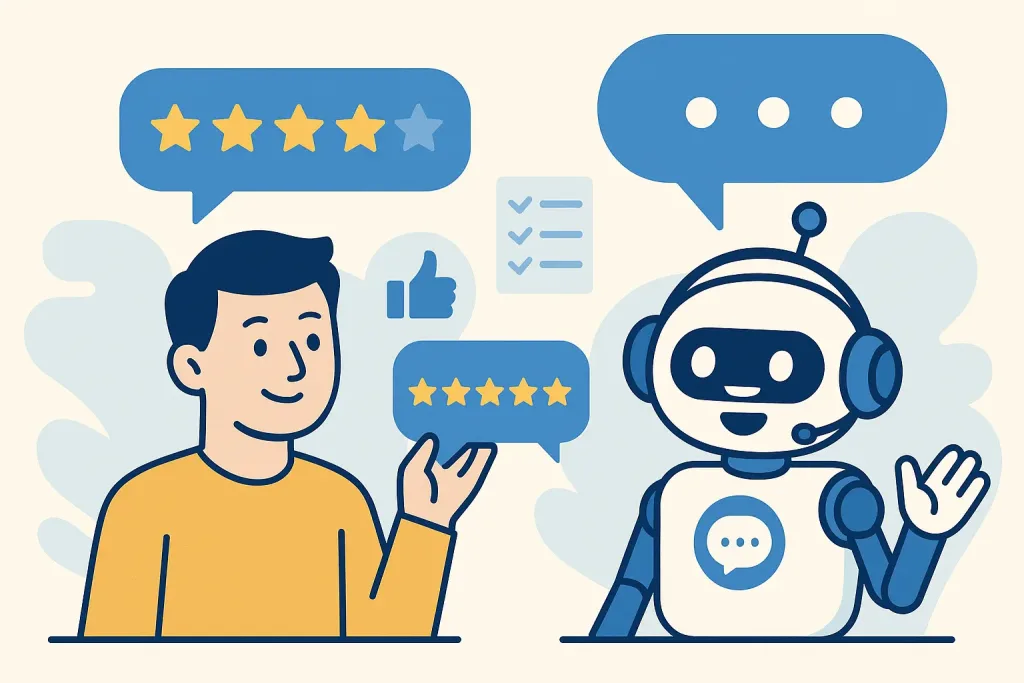
Let users share what works or doesn’t. If they say, “It missed my gluten-free question,” tweak the bot to nail those answers next time.
Hand Off to Humans
If a question’s too hard, like an angry complaint, pass it to a human smoothly. A bank bot might say, “Tough one! Let’s get you on our team.”
Real-Life Examples of Chatbots
Chatbots are revolutionizing how businesses connect with customers, turning routine interactions into seamless, delightful experiences. Below are some great chatbot examples.
1. stc Kuwait is using REVE Chatbot
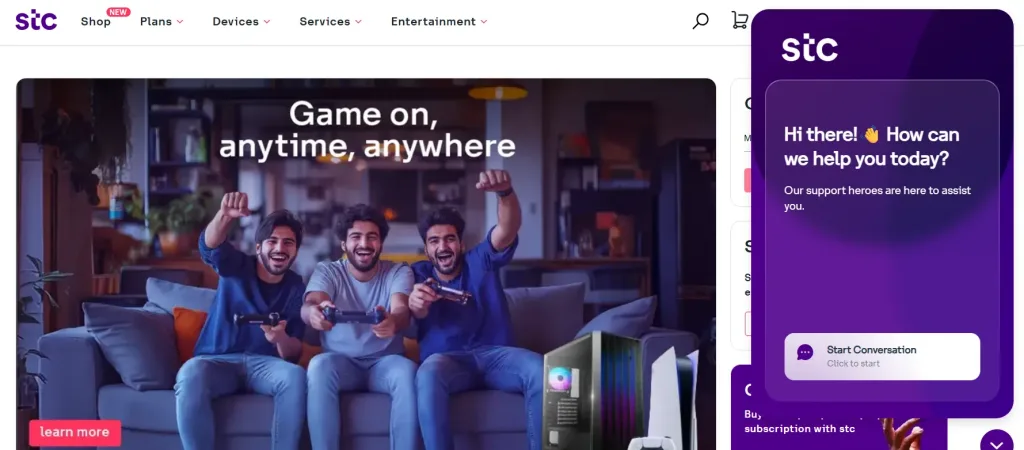
stc Kuwait, a telecom giant with 2.4 million customers, uses REVE Chat’s AI-powered chatbot to transform support, instantly resolving queries like “Why’s my data slow?” or guiding plan upgrades in Arabic and English across WhatsApp and their website.
This multilingual bot handles 85% of inquiries, slashing wait times and boosting satisfaction by 45%, making customer service faster and more personalized.
2. Guardian Life Insurance
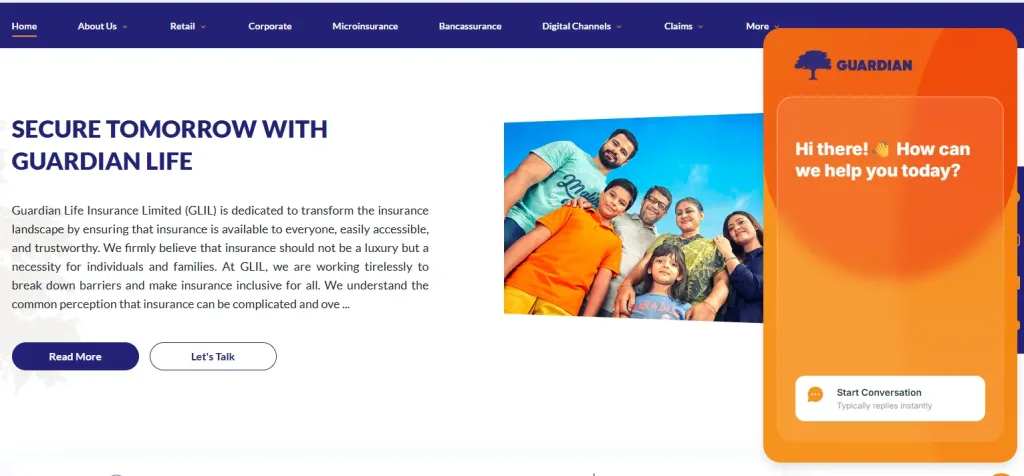
Guardian Life insurance is using an AI-powered chatbot, built on REVE Chat, that welcomes users with multilingual greetings, guides policy checks, and processes payments via bKash or Nagad, while offering interactive carousels for products like Savings or Term Life.
It verifies OTPs for secure claims access and routes complex queries to live agents, boosting engagement and streamlining insurance tasks for thousands of users.
The Future of Chatbots
Chatbots are set to revolutionize interactions by 2027, with 25% of customer engagements powered by conversational AI, offering voice-video chats, hyper-personalized experiences, and smart home control.
- Voice and Video Chatbots: Voice and video chatbots will make interactions feel human, like a smart speaker demoing how to fix your coffee maker.
- Hyper-Personalization: Chatbots will tailor responses using your data, suggesting thrillers if you loved that sci-fi book you bought.
- IoT Integration: Control your smart home with chatbots, dimming lights, or scheduling your vacuum with a quick command.
- Multilingual Mastery: Chatbots will chat fluently in any language, booking a Madrid tour in Spanish without missing a beat.
- Emotional Intelligence: Smarter chatbots will sense frustration and respond empathetically, like soothing you over a delayed order.
- Augmented Reality (AR) Integration: AR chatbots will blend digital and real worlds, letting you try on sunglasses virtually while guiding your choice.
How to build an AI Chatbot?
You can see the video on how to create an AI chatbot with a step-by-step guide.
Conclusion
Chatbots are more than just a trend; they’re reshaping how we connect in a fast-paced world. They empower businesses to save time, cut costs, and build stronger customer relationships through instant, personalized support. For customers, they offer convenience and solutions at the touch of a button, making every interaction feel effortless.
Embracing conversational AI today means staying ahead tomorrow, as these tools evolve to become even smarter and more intuitive. Whether you’re a small business or a global brand, platforms like REVE Chat make it simple to harness this technology.
Take the first step to explore our chatbot and unlock a world of possibilities for your business and your customers. Book a demo now.
Frequently Asked Questions
The main purpose of a chatbot is to provide instant, automated communication to answer questions, solve problems, or perform tasks. They act as virtual assistants, helping businesses handle customer inquiries efficiently while offering users quick access to information.
Yes, most modern chatbots are powered by artificial intelligence (AI), especially conversational AI. AI chatbots use NLP and ML to understand and respond to complex questions, unlike simple rule-based chatbots that follow scripts.
While chatbots are powerful, they have limits. They may struggle with highly complex or emotional queries, like handling a sensitive complaint, where human empathy is key. Technical issues, like misinterpreting slang or needing regular updates, can arise.
Chatbots are marketing superheroes, engaging visitors with personalized product suggestions, promoting deals, and capturing leads. For example, a retail bot might nudge a shopper with “Check out our 20% off sale!” boosting sales and building brand love.
Chatbots help businesses by reducing support costs, streamlining tasks, and boosting sales. They handle thousands of queries at once, saving up to 30% on staffing expenses. They engage visitors to generate leads, like suggesting products to hesitant shoppers, and collect data to refine marketing.
Chatbots can’t fully replace humans, but excel at handling routine tasks. They answer FAQs, process orders, and provide 24/7 support, freeing humans for complex or creative work.

